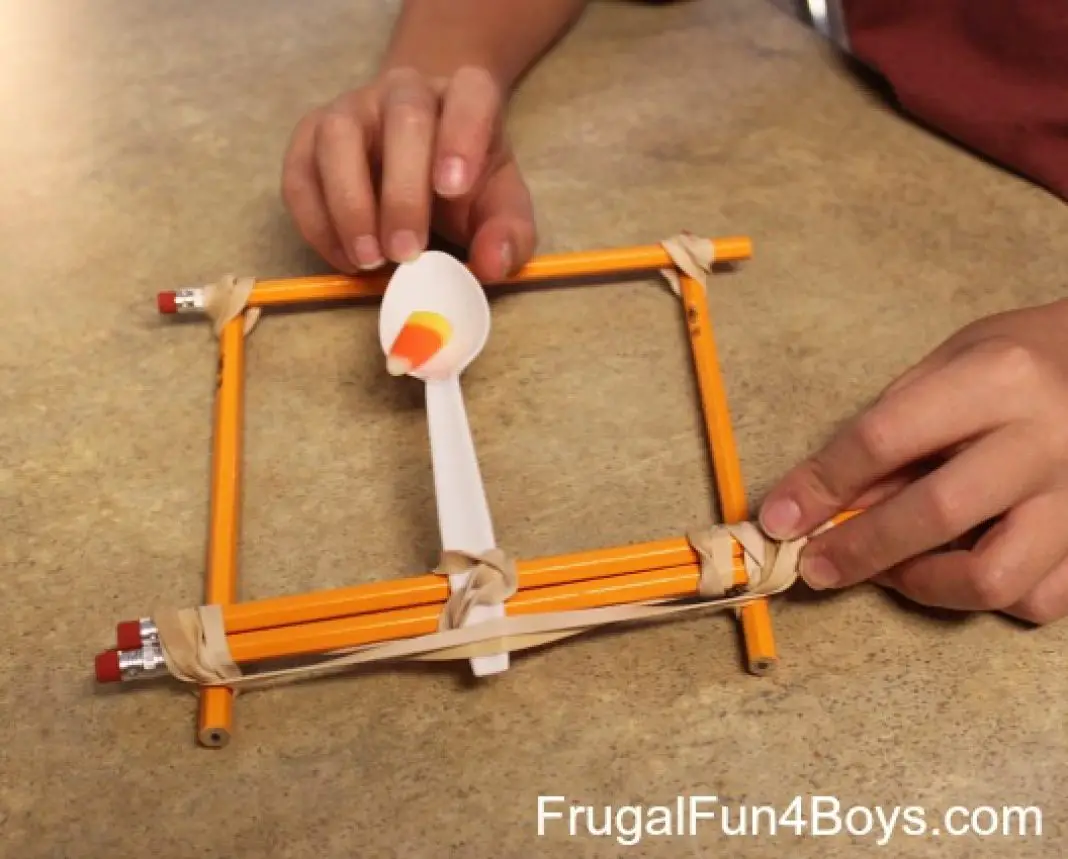

The many loves of Tom Cruise: As actor is linked to Shakira, a look at his relationship history from Cher to Katie Holmes and Nicole Kidman It was worth the time it took to make and it really wasn’t hard to put together.Eurovision fans are left in stitches after BBC reporter accidentally interviews a random man instead of Finland's entrant I highly recommend giving this wonderful STEM activity a go. We had an absolute ball not just making this catapult but also testing out results from when we were using it. What other questions can you think of to ask your child using the play stage? Will they travel further or not as far?.What will happen if we use smaller pompoms?.Will we get the same result if we do the experiment again?.Do you think the pompom will go further than the cotton ball?.How far do you think the pompom will fly?.This wasn’t just great for developing a wider vocabulary, but it built the excitement and encouraged more ‘out of the box’ thinking. We had a lot of fun testing out our predictions and verbalising what we found. Make sure your child is supporting the catapult structure with once hand first, before attempting to press down on the spoon to propel anything off it. It’s a good idea to have your child use two hands. It might seem obvious, but for my 3.5 year old, it took a little coordinating in order to affectively launch something off the catapult. Your child can use pompoms or cotton balls to launch off their catapult.

Once you’ve followed those steps you’re ready to launch! Some children prefer to use an elastic band in the middle, in a cross, that can keep the two groups of sticks from sliding. Of course there are many ways that you can keep all the craft sticks in place. This will stop it from falling off the craft stick when in action. Secure the end of the spoon onto the craft stick using another elastic band. Rest a spoon along the length of your top craft stick, holding it into place with the elastic band already in place. This will create the leverage needed for your catapult. Place the thicker group of craft sticks between those two to hold it open. Split apart the two craft sticks that have been joined by an elastic band at one end. Hehehĭivide your craft sticks into two groups, one with two sticks and the other with five sticks.Īdd an elastic band to each end of the group of five and one elastic band to the end of the group of two, as shown. It’s like taking your child’s fingers to the gym for a workout. Including the elastic bands in play creates resistance for little fingers and helps build fine motor skills. Fine motor skillsīuilding and playing with a catapult like this one is great for other reasons too. These S.T.E.M activities don’t have to be taught as separate subjects. They can also be integrated together in the one activity, such as building and using a catapult using crafts sticks. There has been a great push to include more of this in a child’s daily play and educational curriculum as it’s recognised as important in cognitive thinking and problem solving. If it’s unfamiliar to you, S.T.E.M stands for science, technology, engineering and mathematics. To help your child make their very own catapult using craft sticks, you’ll need –
#HOMEMADE CATAPULT HOW TO#
How to build a catapult using craft sticks (Strict and active supervision is required on all my activities at all times) Turns out they are super simple to make and a great STEM activity to try. I’ve had all the pieces that I need in my back cupboard, but working out how to put it together I thought would be a greater challenge that it turned out to be. Making a catapult has certainly been on my ‘to do list’ for a very long time. Once you’ve made one you’ll find your child testing it out and discovering all sorts of answers to their questions. It’s surprisingly very simple to learn how to build a catapult using craft sticks and a few other bits and pieces.


 0 kommentar(er)
0 kommentar(er)
